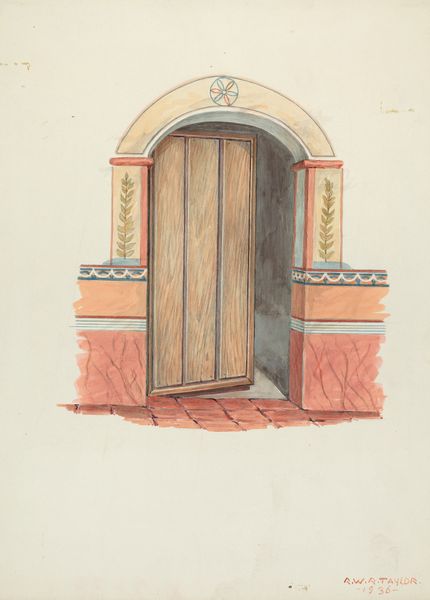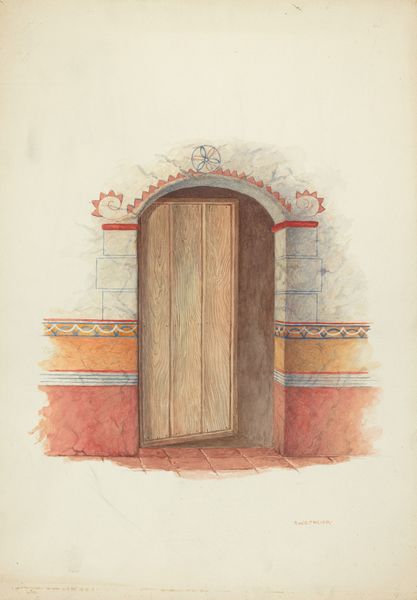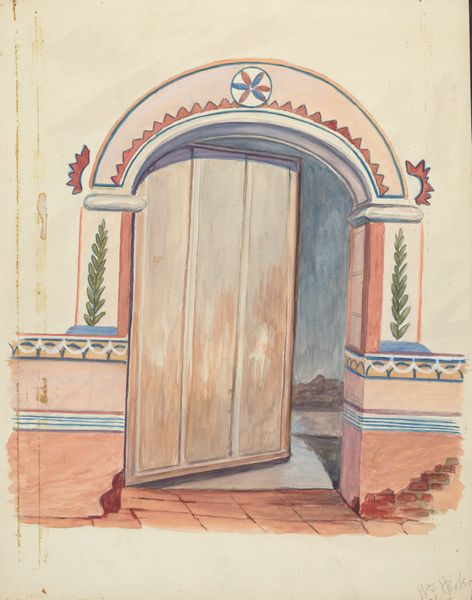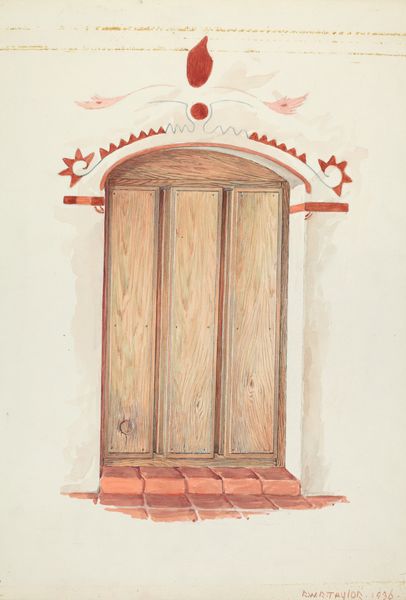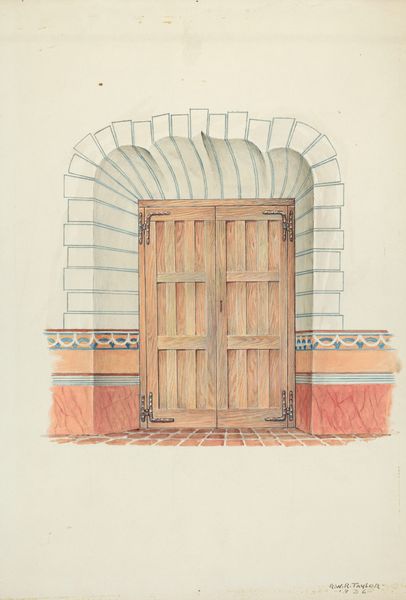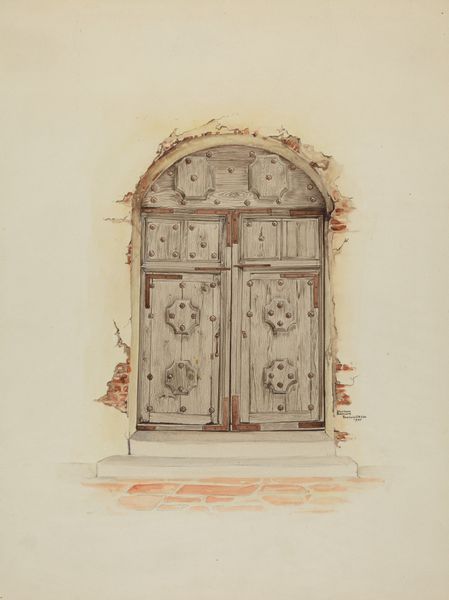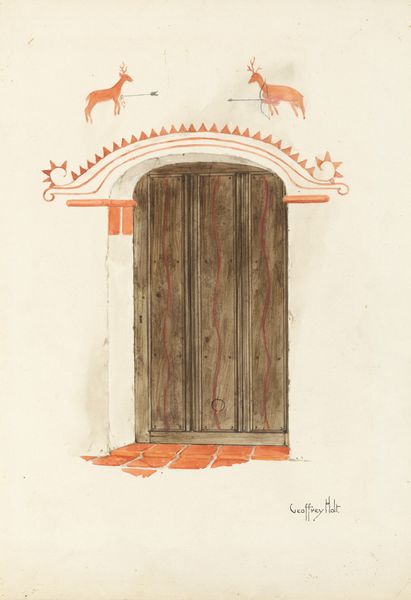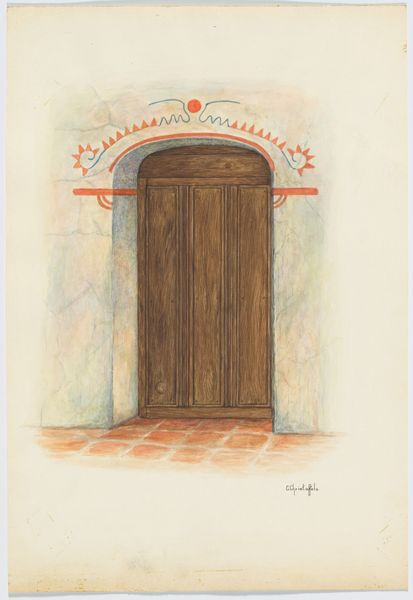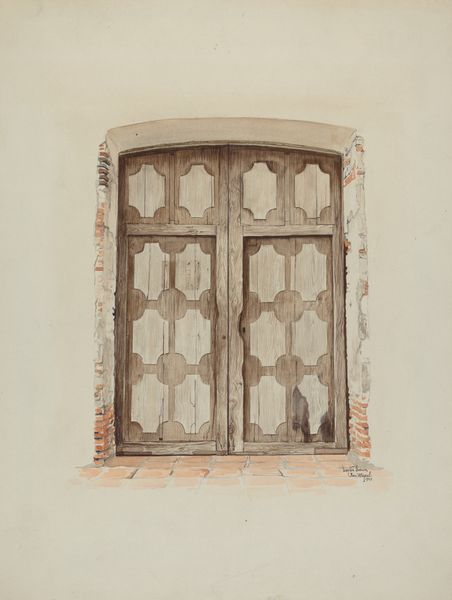
drawing, coloured-pencil, watercolor, pencil
#
drawing
#
coloured-pencil
#
water colours
#
landscape
#
watercolor
#
coloured pencil
#
pencil
#
academic-art
Dimensions: overall: 33.1 x 24.2 cm (13 1/16 x 9 1/2 in.) Original IAD Object: 36" wide; 85" high
Copyright: National Gallery of Art: CC0 1.0
Editor: Here we have R.W.R. Taylor’s "Wall Painting," created in 1936, using watercolor and colored pencil. It's a rather straightforward depiction of a doorway, and I immediately notice how the artist plays with symmetry and geometric forms. What strikes you most about its composition? Curator: I observe that the artist employs a restricted palette, yet attains considerable chromatic complexity by modulating the intensity and tone of each pigment. How does this influence the viewer's understanding of depth and dimension within the image? Notice the orthogonals formed by the lines of the wood panels receding into the space. Editor: It does create an intriguing, subtle depth. The slight angle of the door adds to that, almost inviting us in. The tilework is quite compelling too, so carefully rendered. Curator: Indeed. Consider how the arrangement of tesserae in the tile work, juxtaposed with the grain of the wood, engenders a formal dialogue between texture and pattern. Further, does the partial opening of the portal suggest a liminal space, poised between the interior and exterior, and thus engaging with phenomenological concerns? Editor: I hadn't considered it that deeply, but I can definitely see how the doorway as a threshold adds another layer to it all. That contrast between textures certainly creates more visual interest. I appreciate you pointing that out. Curator: The artist has certainly provided a complex exercise in form and materiality within the two-dimensional surface. We are forced to confront our assumptions regarding representational space. Editor: I'm walking away with a fresh perspective of how even a seemingly simple subject, such as this one, holds considerable nuances when examined through a formal lens.
Comments
No comments
Be the first to comment and join the conversation on the ultimate creative platform.
